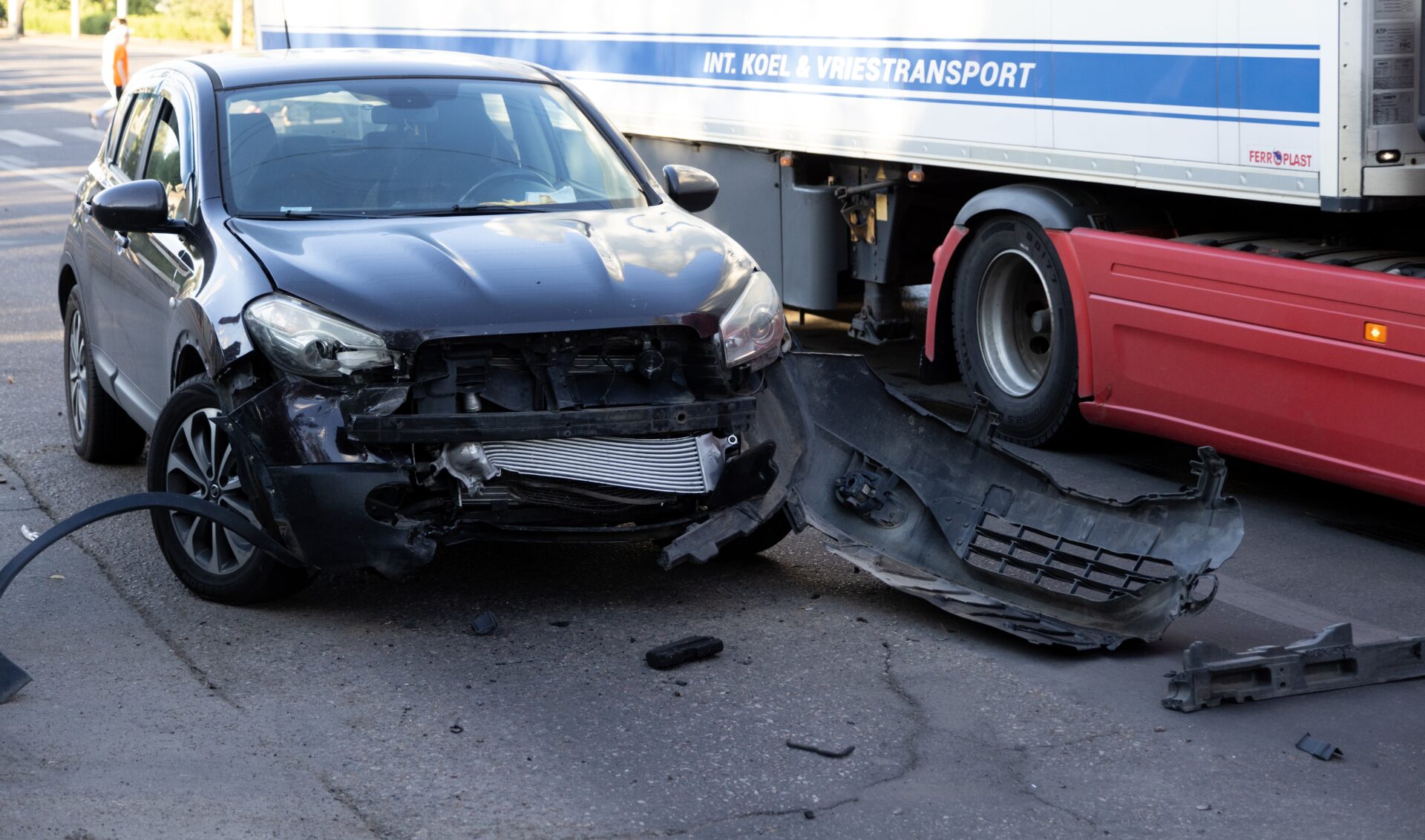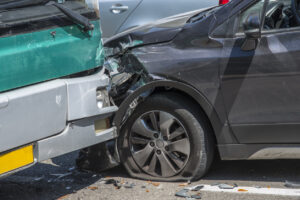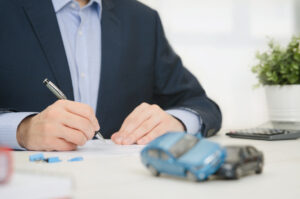John Austin | October 24, 2025 | Car Accidents

Speeding reduces reaction time, increases stopping distance, and makes collisions more severe and uncontrollable. Victims of speeding crashes endure life-changing injuries such as broken bones or traumatic brain injuries, or even wrongful death.
You may be entitled to compensation if injured in a vehicle crash caused by a speeding driver. Even so, you must demonstrate how the actions of the speeding driver contributed to the accident and your injuries.
Insurance companies may also downplay your injuries or shift blame to you. However, working with a legal professional can protect your legal rights. That’s where our dedicated car accident lawyers at Roman Austin Personal Injury Lawyers can help.
We know how to investigate speeding-related crashes, gather supporting evidence, and fight for the compensation you deserve. With our team on your side, you can focus on recovery while we pursue compensation from the negligent party.
Speeding Car Accidents Key Takeaway
- Proving someone was speeding requires evidence like police reports, skid marks, witness testimony, or vehicle data.
- You may sue for a car accident when insurance is insufficient, liability is disputed, or injuries are severe.
- Settlement values vary widely, with catastrophic injuries often leading to higher compensation.
- Car accident claims may take longer due to complex injuries, multiple parties, or insurance disputes.
- Call a car accident attorney to prove liability and support your claim.
How to Prove Someone Was Speeding in an Accident
You must prove liability in a speeding-related crash to support your compensation claim. Here are six sources of evidence that can help demonstrate excessive speed in an accident.

Police Reports and Officer Testimony
The responding police officer’s report is an official documentation of the crash. Officers are trained to assess accident scenes and may note skid marks, impact, and vehicle positioning that suggest speeding.
A car accident lawyer can use a police crash report to support your claim if the officer issued a speeding ticket or noted speed as a contributing factor. Officers may also testify about their observations and professional opinions regarding the accident dynamics.
Witness Statements
Eyewitness accounts from pedestrians, other drivers, or passengers can provide testimony about the speeding driver’s behavior before the crash. Witnesses may have observed the vehicle traveling noticeably faster than the traffic flow, weaving between lanes, or struggling to stop.
Physical Evidence and Skid Marks
The accident scene tells a perspective about the crash. Longer skid marks indicate higher speeds, as pacing vehicles require greater distances to stop. Accident reconstruction experts can analyze skid mark length, tire impressions, and road conditions to calculate approximate speeds.
The severity of vehicle damage, depth of impact, and debris scatter patterns also provide clues about the force and speed involved in the collision.
Traffic Camera and Surveillance Footage
Traffic cameras, red-light cameras, and nearby business security systems increasingly monitor modern intersections and roadways. Video footage from these systems can provide definitive proof of a vehicle’s speed and driving behavior leading to the accident.
A car accident attorney can promptly obtain surveillance footage, as many systems automatically delete recordings after a short period.
Vehicle Data Recorders
Many modern vehicles are equipped with event data recorders (EDRs) that capture information about speed, braking, steering, and other vehicle dynamics seconds before a crash. The data in these recorders provides objective evidence that cannot be disputed or forgotten. A car accident lawyer can help you access EDR data, which involves specialized equipment and legal procedures.
Cell Phone Records and Expert Analysis
If distracted driving contributed to speeding, cell phone records can show if the driver was texting, calling, or using apps during the accident timeframe. An accident reconstruction expert can analyze evidence to provide professional opinions about vehicle speeds, driver behavior, and how the accident occurred.
Who Is Liable in an Accident
Determining liability in a car accident involves identifying which party or parties are legally responsible for the crash and resulting damages. Depending on the circumstances, multiple parties may share fault.
Here are the different parties who may be liable for your injury-related losses:
The At-Fault Driver
The most common liable party is the driver who caused the accident through negligent behavior. A driver may be liable for offenses like speeding, running red lights, distracted driving, drunk driving, or failing to yield right-of-way.
The negligent driver’s insurance typically covers damages to other parties involved in the crash.
Vehicle Owners
When someone borrows a vehicle and causes an accident, the driver and the vehicle owner may be held liable under vicarious liability laws.
This is particularly relevant in family situations where parents own vehicles driven by their children, or when employers allow employees to use company vehicles.
Employers and Companies
Employers can be held liable for accidents caused by their employees during work hours or while performing job-related duties under the “respondeat superior” doctrine.
Employer liability applies to delivery drivers, truckers, sales representatives, and other workers driving for business purposes. Companies may also face liability for inadequate driver training or hiring practices.
Government Entities
Local, state, or federal governments may be liable when their actions or inactions contributed to the crash. For example, a crash occurs due to poor road conditions, inadequate signage, malfunctioning traffic signals, or dangerous road design.
However, claims against government entities often have special procedures and shorter filing deadlines.
Property Owners
Parking lot owners, shopping centers, and private property managers can also be liable for accidents. A car accident lawyer can prove that a crash occurred on their premises due to poor lighting, inadequate traffic control, or hazardous conditions.
Multiple Party Liability
Many accidents involve shared fault among multiple parties. For example, one driver might be speeding while another fails to signal a lane change. In shared liability states, damages are allocated based on each party’s percentage of fault.
Can I Sue for a Car Accident

Yes, you can sue for a car accident under certain circumstances. While many car accident cases are resolved through insurance claims, certain situations necessitate filing a lawsuit. A car accident lawsuit is an opportunity for a neutral assessment of your claim before a judge or jury.
Severe or Permanent Disability
When a car accident results in severe injuries, permanent disability, or long-term impairment, a lawsuit can help recover adequate compensation. Insurance policy limits often fall far short of covering medical treatments, rehabilitation costs, lost future earnings, and ongoing care needs.
Severe injuries such as traumatic brain injuries, amputations, or conditions requiring lifelong medical care generate substantial losses that exceed typical insurance coverage. A car accident lawsuit allows you to pursue maximum compensation from all liable parties.
Low Ball Settlement Offers
Insurance companies frequently offer quick settlements, hoping you’ll accept without objections. These lowball offers may not account for future medical expenses, lost earning capacity, rehabilitation expenses, or reduced quality of life.
You can file a lawsuit when insurers refuse fair negotiations or make unreasonable offers. The threat of litigation often motivates insurers to engage in more serious settlement negotiations. A car accident attorney can initiate legal action so a jury can award damages that reflect your losses.
Reckless Driving
You can initiate a lawsuit involving reckless driving, such as excessive speeding, aggressive driving, racing, or driving under the influence. A judge or jury can award you punitive damages due to the egregious nature of the conduct.
Punitive damages are additional damages that go beyond compensating for actual losses, increasing your recovery. Courts view reckless driving seriously, and juries may award substantial verdicts in cases involving particularly dangerous behavior.
Disputed Liability
When fault for the accident is disputed, insurance companies may deny claims or offer minimal settlements based on their version of events.
You can file a lawsuit if the other party’s insurer refuses to accept responsibility or claims you were at fault. A car accident lawyer can use a lawsuit to present evidence, call witnesses, and examine submissions of the negligent party.
The court will also examine the case to determine liability. A lawsuit is particularly helpful in complex accidents where multiple factors contributed to the crash or where the other party’s insurance company is acting in bad faith.
Uninsured/Underinsured Driver
You can file a lawsuit when the at-fault driver lacks insurance or has insufficient coverage to pay for your damages. A car accident attorney can use the lawsuit to recover compensation directly from the responsible party.
While uninsured drivers may have limited assets, some may have recoverable property, future earnings, or other resources. If you have uninsured/underinsured motorist coverage, you may need to file suit against your insurer to compel it to honor your policy benefits.
How Much Money Can I Sue for a Car Accident
There is no average value you can sue for a car accident. The value depends on the applicable details and circumstances of the crash. Here are the factors that influence how much you can sue for a car accident:
Severity of Injury
The severity of your injuries directly impacts potential lawsuit amounts. Minor injuries like whiplash or soft tissue damage typically result in lower settlement values.
Catastrophic injuries such as spinal cord damage, traumatic brain injuries, or permanent disabilities usually result in high settlements, sometimes reaching into the millions. Severe injuries deserve high settlement values due to economic damages, future care needs, pain and diminished quality of life.
Shared Fault
Shared fault arises when the injured party contributed to the accident. If you’re found 20 percent at fault for the accident, your damages are reduced by that percentage.
For example, a $100,000 award becomes $80,000 because of your 20 percent responsibility for the crash. Some states bar recovery if you’re more than 50 percent at fault. A car accident lawyer can use evidence to shield you from being falsely blamed for the crash.
Insurance Coverage of the Negligent Party
The at-fault driver’s insurance limits often cap your potential recovery. Minimum liability coverage varies by state and may only provide a small amount of compensation.
Even with higher coverage limits, severe injury cases can easily exceed what insurance will pay. A car accident attorney can explore additional compensation from personal assets or uninsured/underinsured coverage.
Availability of Evidence
Strong evidence increases lawsuit value by proving liability and damages. Clear documentation of the other driver’s fault, comprehensive medical records, witness testimony, and expert analysis strengthen your case and lead to higher settlement offers.
Weak or disputed evidence reduces potential awards, as an insurer may claim your injury was unrelated to the accident.
Get the Legal Support You Deserve After a Speeding Accident
You’re likely to experience worsening mental health after being injured in a speeding crash. For instance, you may have post-traumatic stress disorder if the events leading to the collision were traumatic.

You may also suffer financial strain due to the expenses involved in the recovery from your injury. A car accident attorney at Roman Austin can use evidence to prove fault, negotiate with insurers, or litigate for a fair settlement value.
Contact us today, at (727) 787-2500 to schedule a free case evaluation.
Car Accidents Frequently Asked Questions
Why Is My Car Accident Claim Taking So Long
Car accident claims take time due to several factors, including insurance companies’ need to investigate the accident, review medical records, assess property damage, and determine fault.
Cases with serious injuries, disputed liability, or multiple parties involved require a more thorough review. Missing documentation, slow medical treatment, or negotiations between insurers can delay the settlement.
Should I Hire an Attorney for a Car Accident
Consider hiring a car accident attorney if you suffered serious injuries, face disputed liability, deal with uncooperative insurance companies, or encounter complex legal issues. They can use their negotiation skills to fight for a better settlement, handle paperwork, and protect your rights.
A car accident lawyer will also evaluate the merits of your case and advise you to make appropriate decisions that protect your rights.
Do You Have to File a Claim After an Accident
You’re not legally required to file an insurance claim after every accident, but it’s usually wise. Most insurance policies require prompt notification of accidents. Even minor incidents can have hidden damage or delayed injury claims.
Failing to report may violate your policy terms and leave you financially vulnerable if a hidden injury worsens later.


